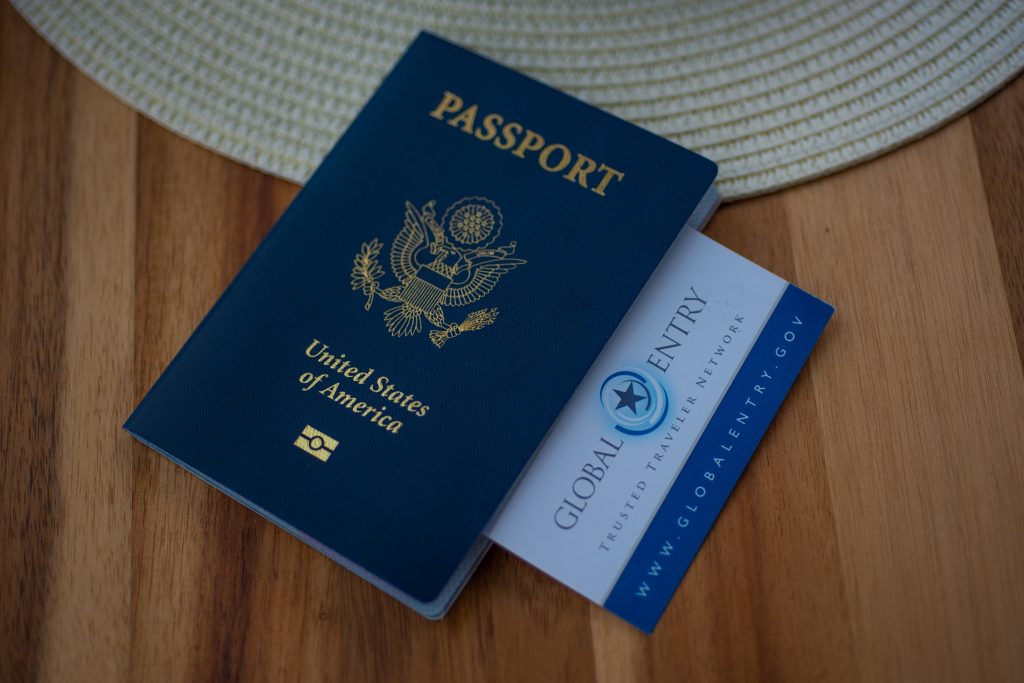The idea of becoming a digital nomad—working remotely while exploring the world—sounds exciting, but getting started can feel overwhelming. Many people dream of leaving the 9-to-5 behind, only to face questions like: Do I have the right skills? How will I stay productive on the road? What if I struggle with loneliness or an unreliable internet?
Transitioning into the digital nomad lifestyle comes with challenges. You’ll need to figure out how to earn income remotely, manage your time effectively, and stay connected across time zones. Without proper preparation, dealing with new cultures and legal requirements for working abroad can be tricky.
With the right approach—like assessing your skills, building a remote work setup, and choosing the right destination—you can thrive as a digital nomad. This guide will walk you through every step to help you build a remote lifestyle that works for you.
How to Start Your Digital Nomad Journey
Living and working remotely while traveling the world is appealing, but it takes thoughtful planning. From assessing your skills to managing finances and staying connected, each step is essential to thrive on the road.
Assess Your Skills and Choose the Right Remote Work
Before jumping into the remote work lifestyle, it’s essential to analyze your skills and see if they match up with what remote jobs are looking for. Here’s how to get yourself ready:
- Evaluate Your Current Skills
Write down what you’re good at and see how those skills line up with remote jobs that interest you. This will help you know where you shine or where you might need to improve.
- Research Remote Work Opportunities
Look at sectors known for offering remote work, like technology, customer service, or digital marketing. Websites like WeWorkRemotely, Remote.co, and Upwork are great places to find these opportunities.
Choosing the Right Niche
- Identify In-Demand Skills:
Pick areas where your skills are in high demand. Things like coding, digital marketing, and graphic design are always on the lookout for talented folks.
- Tailor Your Skills to Market Need
If you find you’re missing critical skills, consider taking online courses from platforms like Coursera or Udemy to beef up your capabilities.
Building a Professional Online Presence
Having a strong online presence is key to attracting remote work. Here’s how to build yours:
- Develop a Professional Portfolio
Put your best work in a portfolio on your own website or on professional sites like LinkedIn.
- Utilize Social Media
Stay active on social media platforms that matter in your industry, such as LinkedIn for professionals, Instagram for creatives, or Twitter for tech and media folks.
By smartly assessing your skills and boosting your online visibility, you’ll be in a great spot to smoothly transition into remote work.
Building an Effective Remote Work Setup
Creating an effective remote work setup is crucial for both productivity and work-life balance. Here’s how to get it right:
Setting Up Your Workspace
- Invest in a good quality desk and a comfortable chair. Consider ergonomic options to enhance your work efficiency and protect your posture.
- Noise-canceling headphones can be a great addition, especially in noisy environments, helping you focus and maintain productivity.
- Equip yourself with the necessary gear, including a durable laptop and a reliable portable internet device, to work effectively from any location.
Work-Life Balance Strategies
Time Management: Establish a structured daily routine with clear boundaries between work hours and personal time to ensure productivity without burnout.
Physical Environment: Organize your workspace to minimize distractions. This could mean having a dedicated office space or setting up temporary work areas that help you get into ‘work mode.’
Choose the Right Location for Remote Work
Selecting an ideal location significantly impacts your remote work success. Consider these key factors:
Visa and legal requirements: Verify visa requirements and passport validity, and understand the costs and process times.
Cost of living: Assess housing, utilities, and grocery costs to ensure they fit your budget.
Lifestyle preferences: Choose a location that aligns with the lifestyle you desire, whether it’s vibrant city life or serene beach settings.
Safety and inclusivity: Opt for locations known for their welcoming attitude towards diverse cultures and lifestyles.
Connectivity: Prioritize areas with reliable internet and active digital nomad communities for better support and networking.
Time zone considerations: Ensure the local time zone allows for effective collaboration with your team or clients.
Tax considerations: Understand tax implications in your home country and abroad; consult a tax professional familiar with digital nomad laws.
By carefully weighing these factors, you can choose a location that not only facilitates effective work but also complements your digital nomad lifestyle.
Build a Smart Budget
Managing your money is super important when you’re living the digital nomad life. Here’s an easy way to keep your finances on track while you travel:
- Manage Finances and Income
Spread your income sources across remote jobs, freelance gigs, or passive revenue streams. Regularly check how much you’re making and spending to keep surprises at bay.
- International Banking
Choose a bank that suits digital nomads. Wise (formerly TransferWise) and Revolut are great options because they have low fees for changing money and sending it across borders. Plus, you can handle multiple currencies easily.
- Handling Taxes
Know the tax rules for both your home country and where you’re staying. If you’re from the U.S., you’ll still need to file taxes, but you might be able to claim credits for taxes paid abroad. It’s wise to talk to a tax expert who understands digital nomad taxes so you stay on top of things.
- Budgeting and Saving
Live within your means while abroad by using a strict budget. Keep track of all your spending, from rent to travel to eating out.
Look for ways to save, like choosing cheaper housing or cooking at home more often. Apps like Mint or YNAB (You Need A Budget) can help you watch your finances and plan better.
Long-Term Financial Planning: Think Ahead
Just because you’re on the move doesn’t mean you can skip retirement planning. Start building a nest egg by:
- Opening a retirement account: If you’re from the U.S., look into Roth IRAs or 401(k)s. European nomads might explore private pension schemes.
- Investing smartly: Consider low-fee index funds or ETFs (Exchange-Traded Funds) for passive income. Use platforms like Vanguard or Betterment for easy management.
- Saving for big goals: If you dream of buying property or starting a business, set clear financial targets and contribute regularly.
Emergency Savings: Your Safety Net
Unexpected events—like canceled gigs, medical emergencies, or sudden flight changes—can hit hard. Build an emergency fund that covers at least 3-6 months of expenses. For flexibility, keep it easily accessible in a multi-currency account like Wise or Revolut.
With these steps, you can enjoy life as a digital nomad without stressing too much about money.
Checklist of Essential Documents for Working Abroad
Applying for a digital nomad visa is essential if you plan to work remotely while living abroad. Tourist visas may not allow remote work, so it’s important to choose the right visa for your destination. Here’s a step-by-step guide to help you prepare:
Visa Application Essentials
To apply for your visa, ensure you have the following:
- Valid passport: Must be valid for at least six months beyond your entry date with blank pages for stamps.
- Passport-sized photos: Usually two or more, taken at an authorized center.
- Proof of income or savings: Provide bank statements or documents showing that you meet the country’s financial requirements.
- Job contracts or client agreements: Freelancers should show proof of ongoing work.
- Health insurance: Purchase from the country you’re applying to, as this is often a requirement.
- Accommodation booking: You’ll need proof of a place to stay, like a hotel reservation from Booking.com or an Airbnb rental.
- Flight ticket: In some cases, you’ll need to provide details of your inbound flight.
Don’t Forget Travelers Insurance
After securing your visa, get travel insurance to protect against unexpected costs like medical emergencies, repatriation, trip cancellations, or lost baggage. This ensures you’re covered for any travel hiccups that might occur during your journey.
Platforms like World Nomads or SafetyWing are popular choices for digital nomads and offer flexible plans. With these documents and insurance in place, you’ll be well-prepared for your digital nomad life abroad!
Overcoming Challenges in Remote Work and Travel
Remote work while traveling brings unique challenges, but with preparation, they can be managed.
Dealing with Isolation and Lack of Social Interaction
Traveling alone can lead to feelings of isolation and a lack of social interaction. Stay connected by engaging in coworking spaces, online communities, or networking events to maintain social connections.
Maintaining Productivity
Frequent travel and changing time zones can disrupt work routines. Establish a consistent schedule, prioritize tasks, and communicate availability with your team to stay productive.
Tools like Google Calendar or Asana can keep you organized. You can also adjust your availability to fit time zones by communicating with your team early on.
Handling Connectivity Issues
Unreliable internet can hinder remote work. Research stable internet options in advance and carry a backup connection like a mobile hotspot. Maintain clear communication with your team to prevent delays or misunderstandings caused by connectivity issues.
By staying organized, managing your time effectively, and keeping social connections alive, you can overcome the common difficulties of remote work while traveling.
Mental Health and Wellness for Digital Nomads
Living the digital nomad lifestyle is exciting—you get to explore new places, meet people, and work on your own terms. But let’s be real: constantly traveling and working remotely can take a toll if you don’t prioritize your mental health. Here’s how you can stay balanced and productive on the go:
Burnout Prevention: Recognize and Recharge
Burnout sneaks up when you push yourself too hard without rest. It’s easy to blur the lines between work and life when your office is a beach or a cozy café. Here’s how to stay ahead:
- Set boundaries: Define specific work hours—and stick to them. When you’re done, be done.
- Take meaningful breaks: Try the Pomodoro technique—work for 25 minutes, then take a 5-minute break. These small resets keep you fresh.
- Plan downtime: Don’t feel guilty for taking a day off from sightseeing or work. Your brain needs a breather, too.
Staying Mentally Well: Find Your Balance
The key to sustaining this lifestyle is taking care of your well-being. Here are simple ways to stay on top of it:
- Stay active: Movement is medicine—whether it’s a yoga session, a hike, or a swim in the ocean. Exercise boosts both mood and energy.
- Practice mindfulness: Use apps like Calm or Headspace for daily meditation. Even a few minutes of breathing exercises can ease stress.
- Build connections: Loneliness can creep in, so join coworking spaces, attend local meetups, or hop into online nomad communities. Staying social keeps you grounded.
By setting boundaries, staying active, and connecting with others, you’ll not only avoid burnout but create a lifestyle where work and travel fuel each other. Enjoy the ride without running yourself into the ground!
Why eSIM is Essential for Remote Workers on the Go
Staying connected is crucial when working remotely while traveling, and using an eSIM can make a big difference in ensuring uninterrupted communication. Traditional SIM cards can be inconvenient, but eSIM technology offers a flexible and hassle-free solution for digital nomads. Here are five reasons why you should consider switching to an eSIM:
- Instant activation: No need to visit a store or wait for a physical SIM card. You can activate the eSIM online in minutes.
- Multiple numbers on one device: Manage different phone numbers or data plans without juggling multiple SIM cards. Perfect for those working across regions.
- Seamless connectivity: eSIMs allow you to switch between networks for the best coverage, ensuring stable internet even in remote areas.
- Cost-effective: Many eSIM providers offer affordable international plans, saving you from expensive roaming fees.
- Eco-friendly: eSIM eliminates the need for plastic SIM cards, contributing to a sustainable travel lifestyle.
Maya Mobile eSIM is an excellent option for digital nomads, offering reliable coverage across multiple countries with simple activation. Whether you’re working from a bustling café or a quiet beach, Maya Mobile ensures you stay connected with clients and colleagues.
Make your digital nomad journey smoother by switching to an eSIM today. With a reliable network and instant activation, you’ll never have to worry about connectivity issues again. Use Maya Mobile eSIM to stay connected no matter where your travels take you!
Related Reads
- Is Wi-Fi Calling Free Internationally?
- Wi-Fi for Travelers: How to Access Internet Abroad
- 9 Steps to Activate eSIM on iPhones and Android: A Beginner’s Guide
FAQs on Digital Nomads
1.What does a digital nomad do?
A digital nomad works remotely while traveling, using technology to perform tasks. They typically have jobs in areas like marketing, writing, software development, or customer support and move from place to place, working from cafes, coworking spaces, or temporary accommodations.
2. What is a digital nomad’s salary?
Salaries vary widely based on industry and experience. On average:
- Entry-level roles: $30,000 – $50,000/year
- Mid-level freelancers or remote employees: $50,000 – $80,000/year
- Senior positions or highly skilled: $80,000 – $120,000/year
Freelancers may earn fluctuating income depending on projects.
3. How do digital nomads make money?
They earn through:
- Freelance work (writing, design, development)
- Remote employment (marketing, customer support, project management)
- Online businesses (consulting, e-commerce, coaching)
- Content creation (blogging, YouTube, affiliate marketing)
4. Can you legally be a digital nomad?
Yes, but legality depends on visa and tax rules in each country. Many countries offer digital nomad visas that allow remote workers to stay legally for extended periods.
5. Is 30 too old to be a digital nomad?
No, 30 is not too old. Many people start in their 30s or 40s, especially as they seek career flexibility and travel opportunities. Age isn’t a barrier—financial readiness and skills matter more.
6. Do digital nomads pay taxes?
Yes, digital nomads are typically required to pay taxes in their home country unless they become tax residents elsewhere. Some countries have tax treaties or nomad-friendly tax policies.
7. What is the downside of being a digital nomad?
- Isolation from friends and family
- Inconsistent income (for freelancers)
- Limited stability due to constant travel
- Tax and visa complexities
- Work-life balance challenges
8. How many hours a day do digital nomads work?
Work hours vary. Most nomads work between 4 to 8 hours per day, depending on their role and workload. Some may work fewer hours to balance travel and leisure.
9. How do I become a digital nomad with no experience?
- Learn remote-friendly skills like writing, graphic design, coding, or marketing
- Start freelancing on platforms like Upwork, Fiverr, or Toptal
- Join remote job boards (We Work Remotely, Remote.co)
- Network with other nomads for tips and leads
10. What are common digital nomad jobs?
- Freelance Writing and Content Creation
- Software Development and Web Design
- Virtual Assistance
- Digital Marketing and SEO
- Online Teaching or Tutoring
- Consulting and Coaching
These roles provide flexibility and are in high demand among remote workers.




